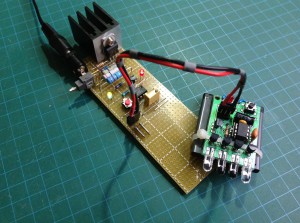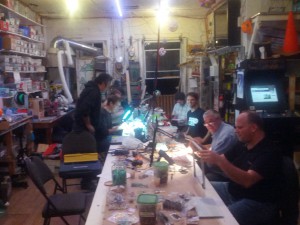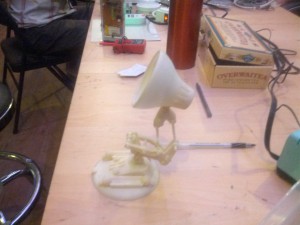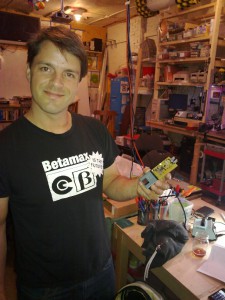Pictures from the Lithium Charger Build Night
Pictures from the Lithium Charger Build Night,
Lithium Charger Build v2 instruction sheet.
I will provide the schematic, build guidelines and setup instructions, plus any parts that are not already at VHS. You will need to bring a DC power adapter of 7.5-9V and at least 800mA rating. If you can only find an adapter rated at 500mA, you will build your charger to suit, otherwise you will build a 700mA charger. Sorry but there seems to be a distinct lack of adapters in this voltage range at VHS, so go and rummage through your junk pile. Also bring a trusted multimeter if you have one, and an enclosure if you want one. And if at all possible, bring a power jack to match the connector on your AC adapter, especially if it’s an odd size, or you may have to hard-wire it to your charger board.
The build will involve 16 components, soldered to perf-board or vero-board (I haven’t decided yet), so skill rating is intermediate. If you haven’t done any electronics it is probably not the greatest entry point. Depending on how this turns out, we could get boards made up for a second build night. PCBs would simplify the build, but it would be helpful to have some early adopters to get the wrinkles out first, hence the idea for this first build to leave some room for individuals to bring their own ideas to the mix.

This is just a quick note with some extra info for those who attended the lithium charger build.
- The barrel jacks with the short wires attached that some of you used to connect your board to your AC adapter should be replaced. Their wires are really too thin for the current we ask them to carry and also too thin to make a durable connection with the board. Best to solder your power supply directly to the board, I think.
- Further experiments show that it’s difficult to charge the Nokia phone batteries at currents over about 500-600mA without the voltage hitting its upper limit. For anyone who built a high-current charger and who’s found that it won’t latch in charging mode, that’s likely the reason. Other formats of lithium cell (like the cylindrical 18650 type found inside many laptop and RC battery packs) should be able to take higher charging currents, though.
- I’ve found that the connection to the battery is a critical point of detail. Since charging will stop if the connection is interrupted for a fraction of a second, you really need these contacts to be flat blades of a good thickness. Otherwise, if the light goes out (meaning the battery is charged) it may just be that a fruit fly landed on the battery and moved it by a few microns. There is brass sheet at the Space which is easy to cut and solder, so I recommend making that upgrade.
Finally, I can’t resist sharing an image of my just-built rechargeable TV-B-Gone getting a fill-up. The phone battery is perfect for this application and it’s simple to connect a charging cable to the ISP header (just make sure you get it the right way round!).



